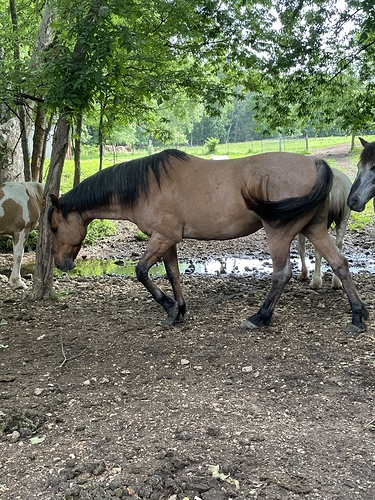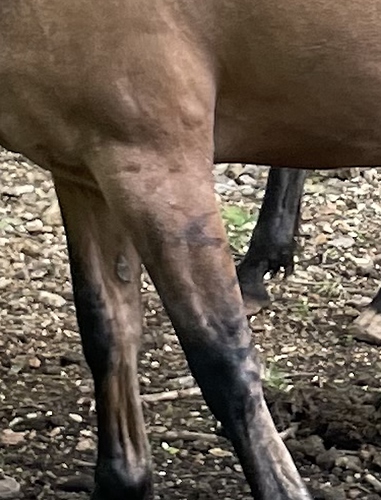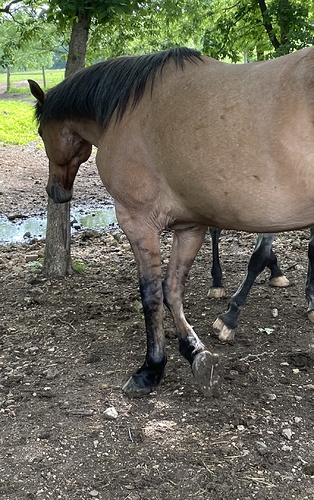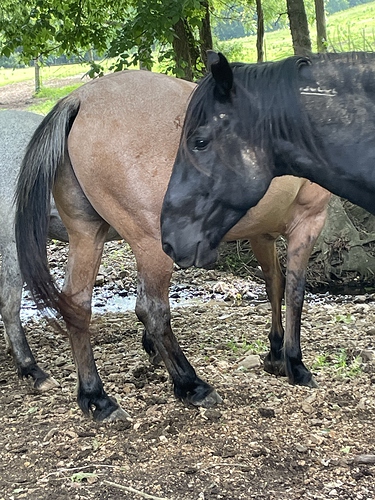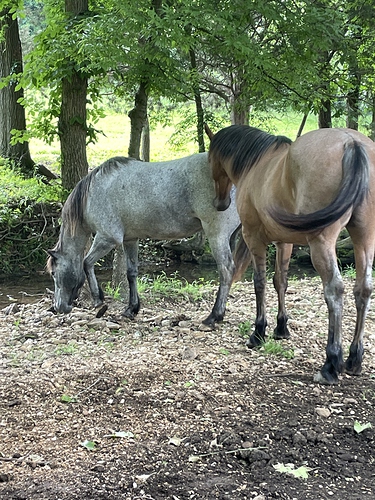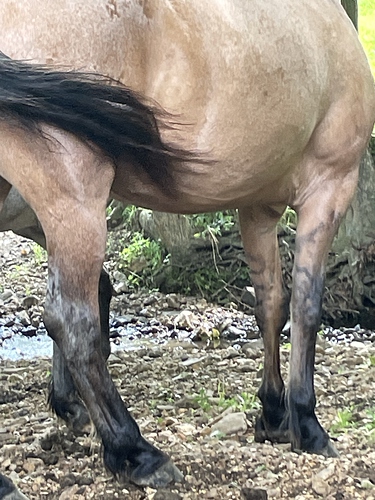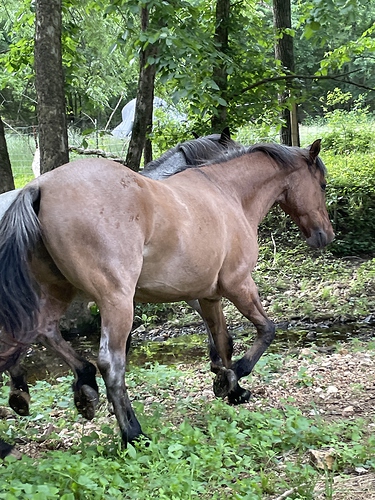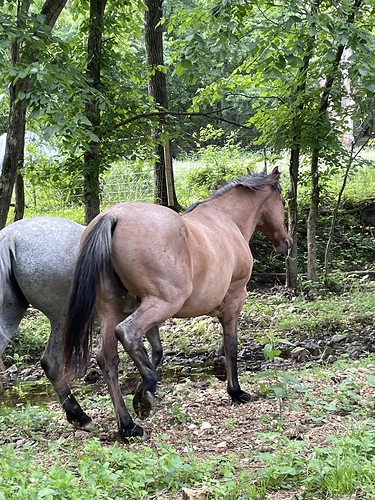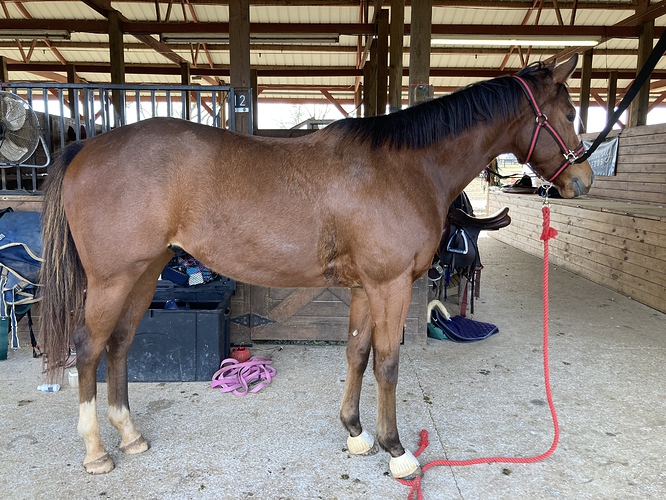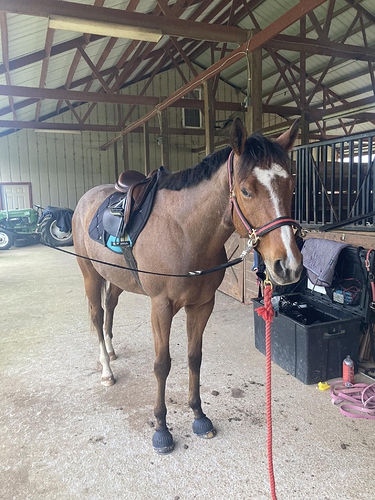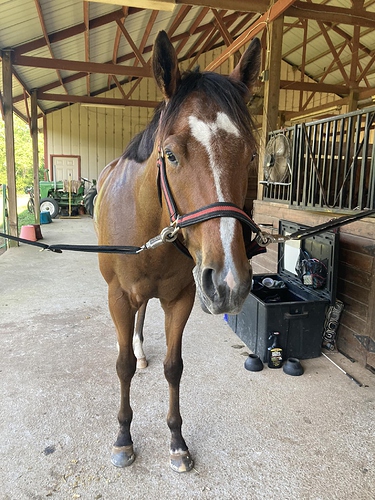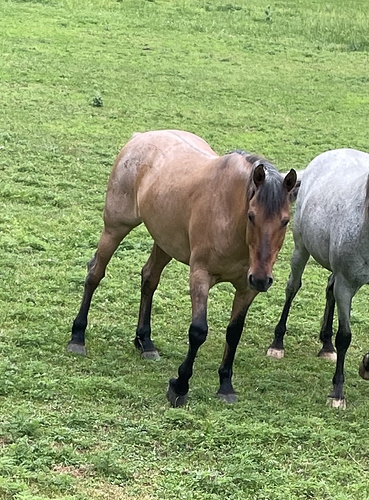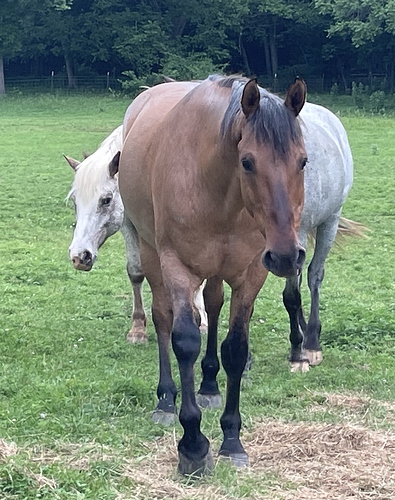Is this supposed to be sooty? Even Etalon doesn’t offer that test, unless things have changed recently there is no test for sooty.
Yes, that was what I believe the written genotype was for sooty. I have no idea about testing!
Chocolate palomino is used to describe anything from a dark red with flaxen, to silver black (aka silver dapple, silver bay is not), or dark or sooty palominos. Equine colour genetics people abhor the term, because it is used for too many different colours.
Right, no test for sooty
I don’t think you can write a genotype for something that is untestable and that geneticists don’t know how it works yet.
Like @JB said, Etalon has made some major errors on basic tests like Frame, Tobiano or HYPP. If your horse didn’t test as a Sabino, and it was because he doesn’t have SB1, but another Sabino like pattern. There are many that look the same, but don’t test as it.
As for the ancestry thing, that’s something to do for fun. Breed testing doesn’t work well in horses, there’s multiple threads here about it.
Some kind of roan? I have a sort of similarly colored horse, though not as light as yours. I’m not sure what to call him other than a bay roan…
Looks to me like a bay dun roan in phenotype. For genotype you can send away to UC Davis.
He has dun factor leg barring and appears to have a dorsal stripe. Also frosted mane.
Buckskin and bay dun can look similar and some horses with the blond body/black points color have both dun and creme genes. Though I think dunskins tend to be lighter “buttermilk” color because of the double dilution of dun + creme.
I can’t decide if he’s bay dun, or dunskin. He’s awfully light even for dun on bay, but he could be a naturally lighter bay to start with. Dun for sure, with that strong dorsal going right into his tail.
He’s also got rabicano going on. That’s causing the “skunk tail”, those white hairs on the sides of the tail, and that can cause a lot of white hairs to look like roan, but rabicano doesn’t go past the barrel. Roan affect the whole body above the legs, and creates a strong upside down V of the points on the legs, and while there’s no direct front view, the side views don’t support that V
Here’s a good example of the Roan V
https://colorgenetics.info/equine/gallery/white-patterns/classic-roan
Scroll a bit to see Bay Roan Legs
Curious on what breed he is, but he looks like he’s bay, I don’t see anything to indicate roan in that picture. Bays can have white flecks in their coat just like any other breed. Do you have a picture of him from the front showing his legs clearly, though he almost seems to be an low point bay, unless he’s really young and his black hasn’t filled in all the way.
I’m leaning to bay dun frosted roan. He looks to me obviously dun. He has the right dilution, more of a peachy shade than a regular bay. Looks like he has a dorsal stripe running through his tail. Depending on the season do you see a dorsal stripe running down his spine? This is why I suspect there is roan involved, because there isn’t a clear dorsal line and also he has cornmarks and white on his hocks, which is common on frosted roans. Does he have inverted V’s on his front legs where the black is pointing up towards his chest? I think that’s the only angle you missed.
He’s Thoroughbred, and is just 4, so young yet. We did list him as bay on his Coggins paperwork. He definitely doesn’t have the ‘traditional’ solid black lower legs - I hadn’t heard that those might develop over time? - and does have white hairs all throughout his coat - may not show up super clearly in photos, and it’s definitely not as obvious as some other true roans I’ve seen.
There is only one TB line that has roan, so unless he is a new mutation or goes back to a stallion from Australia, odds are he’s a lovely bay. He definitely doesn’t have the inverted V’s that are normal for roans.
On some bays the black on their legs takes a few years to fill in completely.
Bay, with white ticking, probably a by-product of whatever white genetic are creating his white legs. I don’t see anything in his tail that suggests rabicano. Definitely not Roan
Unless the front legs have an inverted V of the black, which doesn’t appear to be the case from anything visible from the side, he’s not Roan.
Yeah, this picture shows the dorsal coming down the spine
It’s rabicano doing that 
Yours is definitely not Roan then aide from nothing about his body suggesting Roan 
At 4, they could still develop, but it’s likely they won’t. Not all have solid black, and some have solid in Summer but more like yours in Winter. This was once thought to be a result of “wild bay” but that’s never been proven, so really it’s just another way the shades of bay vary so much.
I cannot believe that no one so far has made a reference to the Wizard of Oz.
His dorsal stripe isn’t strong, but it’s there. So is a cross over his withers. And on his front legs he seems to have an inverted v…but not rear legs
I vote bay dun with heavy frosting/ticking (roaning)from rabacino. Lovely horse!
With those inverted Vs on his front legs I’d be willing to lay money on him being roan, especially combined with the rest of his roan characteristics! Bay dun roan.

